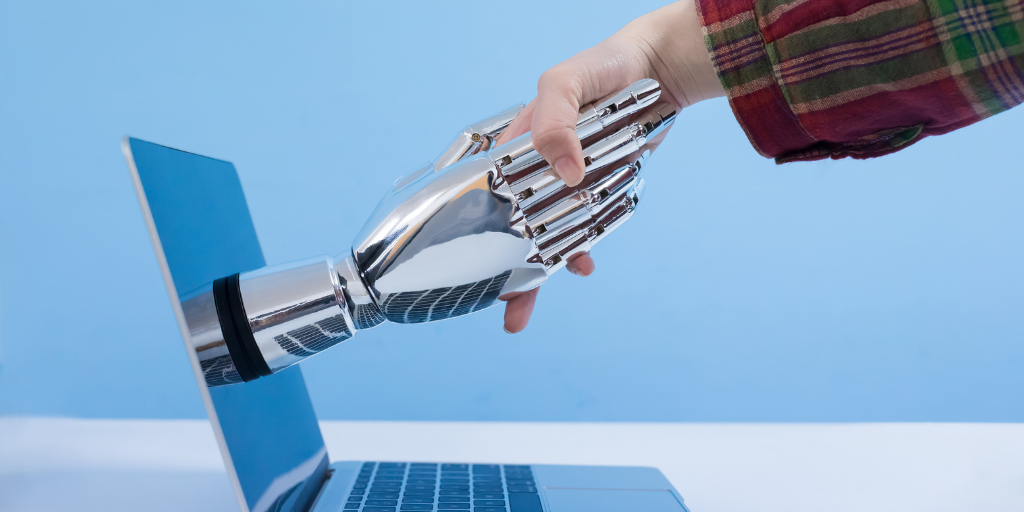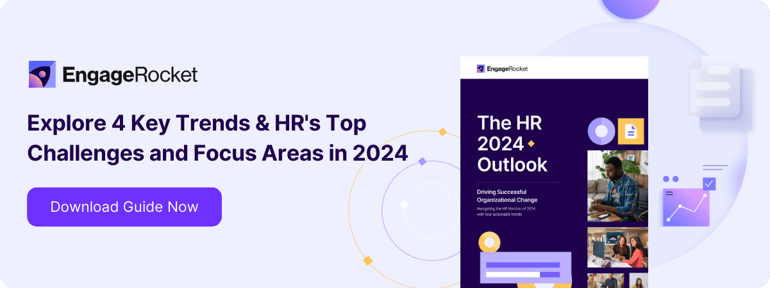As the world of work evolves, Generative AI in HR emerges as a key trend, now significantly propelled forward by the arrival of Google’s Gemini.
This new development ushers in an era of advanced AI technology, with Gemini's unique ability to combine text, code, audio, images, and video.
It's a game-changer for HR professionals, who must now adapt quickly to harness the full potential of these sophisticated tools.
Our HR Outlook 2024 underscores the necessity of generative AI as a tool for progress and resilience in HR. The key question facing HR leaders today is: How can they effectively navigate the world of Generative AI, particularly in understanding its impact on the workforce and its practical applications in HR operations?
The Impact of Generative AI In The Workplace
The launch of ChatGPT in November 2022 marked a turning point. Generative AI and Large Language Models (LLMs) have drastically altered the landscape of tasks ranging from content creation and data analysis to coding and learning & development. McKinsey's 2018 predictions are coming true: Manual skills are declining in necessity, while cognitive and social/emotional skills are increasingly in demand.
Generative AI tools like ChatGPT and Bard are revolutionizing work models, independent of HR's direct involvement. GitHub reports that 92% of programmers use AI tools, and Time Magazine notes that 30% of professionals across industries have experimented with ChatGPT.
This adoption is akin to an industrial revolution, redefining productivity and the nature of work.
“COVID-19 has fundamentally transformed the way we work, with remote working becoming a new norm. Similarly, AI is currently reshaping the skill sets and competencies needed in the modern workforce."
— Paul Carney, EVP, Chief Human Resources Officer at Carter Bank & Trust
Balancing the Benefits and Challenges of Generative AI
MIT Sloan’s study highlights that workers using generative AI can see up to a 40% increase in performance. However, when applied beyond its intended capabilities and without proper managerial guidance, performance can drop by an average of 19 percentage points. This happens when individuals rely too heavily on AI recommendations without validating them with their expertise and judgment.
This calls for a balanced approach to AI in the workplace, blending AI recommendations with human expertise and judgment.
In the era of Generative AI, those leading the way won't just be early adopters; they will need to be forward-thinking decision-makers who set limits and rules for AI-driven productivity.
Generative AI in HR: Key Insights
Reluctance In Adoption
-
According to Gartner, 76% of HR leaders believe a delay in implementing AI solutions could hinder organizational success. Yet, AI ranks low in HR priorities, pointing to a reluctance to embrace generative AI.
-
EngageRocket’s survey places AI at No.9 among the 10 priorities for HR, highlighting a need to overcome organizational hesitation.
-
40% of the workforce will need reskilling as a result of implementing AI and automation in the next three years, according to IBM research. HR teams need to prioritize upskilling and reskilling with a special focus on AI competencies like prompt engineering.
-
As the original industrial revolution turned several manual skills and unorganized sectors irrelevant, employees fear that Generative AI could have the same impact. The fear of job obsolescence due to AI is real, with 17% of employees worried about their roles becoming redundant.
“We are examining the impact of Gen AI, such as GPT on our operations. How can we prepare our workforce to operate in this new environment? How should we approach re-skilling? This isn't about preserving specific jobs, as technology will inevitably replace some roles but to protect employees and ensure the ongoing employability of our workforce in the society."
— James Loo, Managing Director, Head of Human Resources at DBS Bank Taiwan
Overcoming Resistance and Leveraging Optimism
Overcoming employee resistance will be another challenge facing HR in 2024, especially when dealing with older demographics such as older millennials, Gen X, and Baby Boomers.
On the other hand, the same research reveals that 27% of employees are quite optimistic about AI and believe it will positively affect their careers. HR teams should tap into this optimism and mobilize both current and future talent sources to thrive in the generative AI era.
2024 Focus Areas
1. Make reskilling a strategic and tactical imperative:
The demand for Generative AI skills is already increasing and companies are turning to freelancers to fill skill gaps and capitalize on the potential of AI. The top five sought-after Generative AI skills include ChatGPT, natural language processing (NLP), TensorFlow, image processing and AI content creation.
HR leaders need to work closely with business executives and the C-suite to identify which skills will be needed in the next couple of years.
They also need to plan for skill obsolescence and rethink their existing L&D tools accordingly. Workforces may need to undergo assessments to reveal untapped competencies that will be relevant for AI-enabled workplaces.
2. Empower team leaders and managers to lead the AI revolution:
With employees independently exploring AI, managers play a key role in formalizing AI integration. HR leaders should empower managers to identify AI skill gaps and reskilling needs, fostering tailored team plans for AI competency acquisition.
3. Incorporate AI into change management:
The availability of AI in user-friendly SaaS tools that anyone can use adds complexity to its implementation in an organization. That's why HR leaders need to incorporate AI into a broader organizational change effort. This includes gaining support, understanding how employees feel, offering assistance, and addressing problems to make sure everyone is on board. To maximize the benefits of AI, HR should guide employees with a clear framework throughout the entire organization.
4. Know where to deploy AI for HR:
HR should also explore AI applications within its domain, such as recruitment (such as generating job descriptions), onboarding (automating approvals), L&D (including creating personalized content), and employee engagement (utilizing data-driven people analytics).
HR professionals may need to internally undertake reskilling initiatives to shift their focus from administrative tasks to more strategic, cognitive, and problem-solving roles.
Conclusion
Generative AI in HR is pivotal in shaping the future of work. As we advance into 2024 and beyond, HR leaders must not only adopt AI technologies but also cultivate an environment where AI complements human expertise. By doing so, organizations can ensure they are not only AI-equipped but also resilient and adaptable to future challenges.
“Generative AI (GAI) is set to reshape the HR function. Despite the fear that it will replace jobs at scale, AI and automation only tend to impact certain tasks — not entire jobs. There is a real opportunity to use AI to reinvent roles that truly excite jobholders. GAI may not cause job reductions, but there is no doubt that HR professionals who use it will be more in demand than those who don’t. Mercer found that 58% of employers plan to use GAI in HR by June 2024. And while 76% think it will boost efficiency, it’s more than a cost savings play. By democratizing knowledge and creativity, GAI enables innovation, complex problem-solving and higher-quality work."
— Hannah Lennon, Senior Associate - Talent Solutions Consulting at Mercer
💡 Read the full highlights or trends and recommendations for the year ahead in the HR 2024 Outlook below:







 .
. 